C.W. Matthews Contracting Optimizes Use of RAP
BY Tom Kuennen
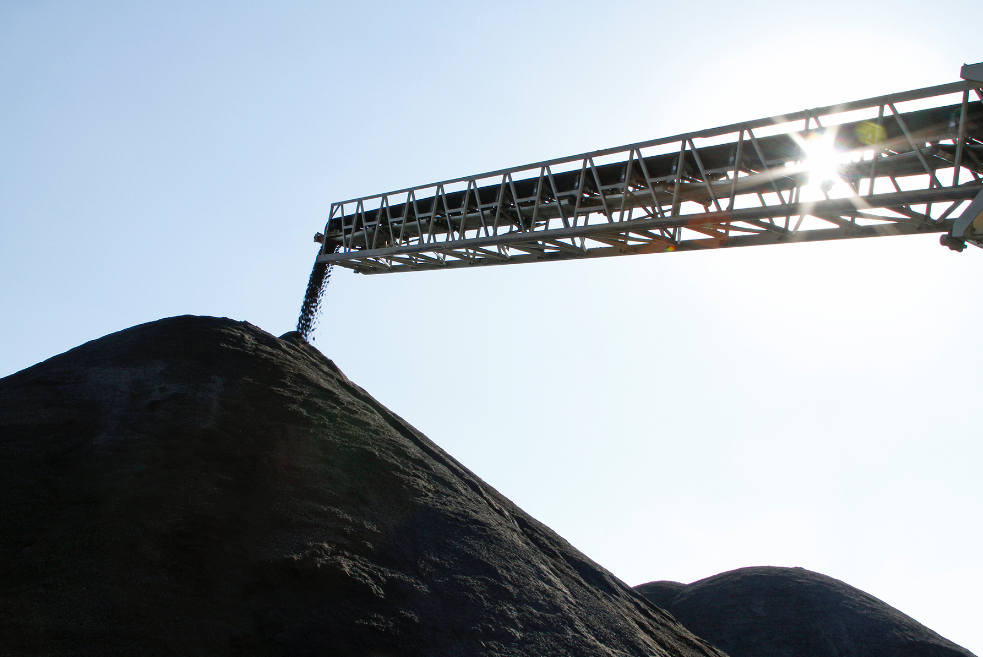
C.W. Matthews Contracting manages RAP with new crushing
Two new impact crushers are helping a Georgia road and bridge contractor save money, optimize use of reclaimed asphalt pavement (RAP) in mixes and better manage RAP stockpiles. Readers know RAP combines a high residual asphalt cement (AC) content with aggregate that has already been acquired, permitted, shot, processed to meet state specs, and transported. This makes RAP a valuable product to the asphalt producer.
Producers apply different monetary values to recycled asphalt. Some value RAP the same as other aggregates, $8 to $10 per ton; others as high as $41 per ton. This is why it’s so important to manage the transportation, storage, processing and use of recycled asphalt materials.
The re-use of milled and demolition asphalt has many advantages. Processing RAP takes a “demolition waste product” and repurposes it as a valuable engineered product. Once milled asphalt is crushed and reclassified by size, and residual asphalt content determined, the asphalt producer can use 15 to 25 percent—or more—recycled material in new asphalt mixes. This helps the producer save money on new, raw aggregate products, as well as on the purchase of AC.
To this end, C.W. Matthews Contracting Co. Inc., Marietta, Georgia, acquired two Kleemann crushers—new Mobirex MR 110 Zi S Evo2 impactors—which are used exclusively in its asphalt plants division, moved from plant to plant as needed to crush RAP into usable fractions.
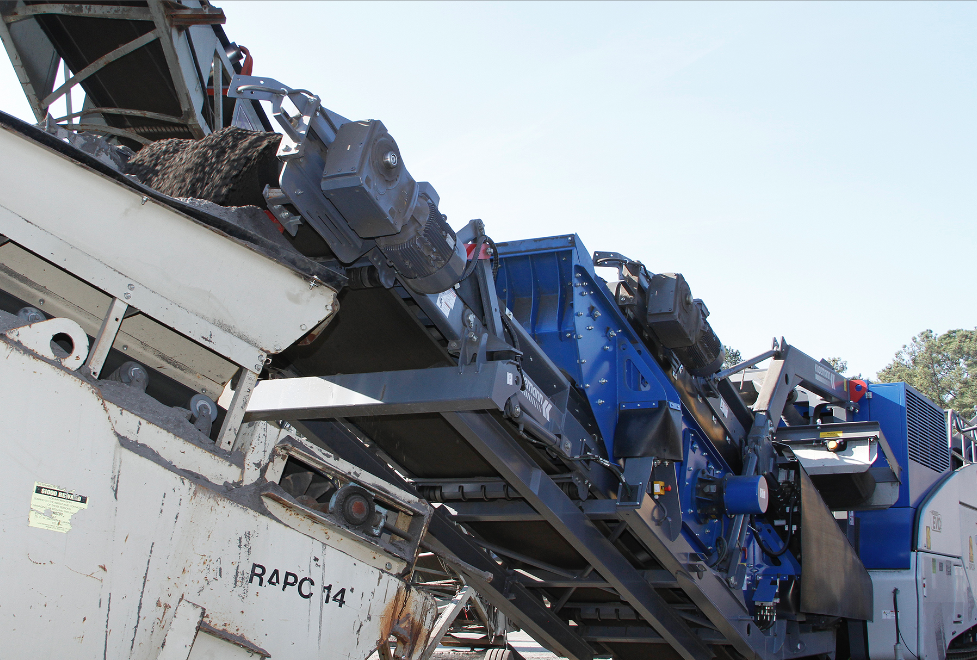
The conveyor-mounted screen eliminates the need for a stand-alone screen, contributing to a compact footprint that lets the impactor sit within the hot-mix plant layout.
How to Screen and Prescreen RAP
“We’re taking the old hot-process asphalt that’s been peeled up off highways and parking lots, and are crushing it down to a half-inch minus,” Greg Taylor said. He’s the general superintendent of C.W. Matthews Atlanta-region South Plants division. That RAP then is fed into hot mixes at various DOT-approved percentages.
C.W. Matthews feeds its Mobirex impactors with excavators instead of front end loaders. “In our configuration, it’s more efficient and faster to use the excavator,” Taylor said. “You also get a better view of what’s going into the crusher. You can actually see inside the hopper and it’s better for the operator.”
Using a hand-held remote, the excavator operator has full control over the Kleemann MR 110 Zi S EVO2 impactor from inside his cab. “He can speed the machine up, or slow it down,” Taylor said. “If the raw feed has too much moisture in it, and he’s having a problem screening the material, he can slow the crusher down. He can do anything he wants with the crusher, for example, move it a little bit for better positioning.”
The “S” in the model number signifies a machine with a screening deck mounted on the crusher’s conveyor. In many cases, this small screen has a big-enough performance to eliminate a stand-alone screen in the process. At C.W. Matthews, there was one deck in the screen, and it screening half-inch RAP, Taylor said, adding oversize comes back on a return conveyor and re-enters the circuit.
Production of RAP is facilitated by the presence of an independent prescreen beneath the feed hopper, which keeps fines from ever entering the system. Instead of a grizzly, a two-inch ‘punch plate’ in the hopper lets smaller material fall through to the prescreen, and from there either into the crushing circuit or out to the fines conveyor, where it is stockpiled while bypassing the crushing circuit.
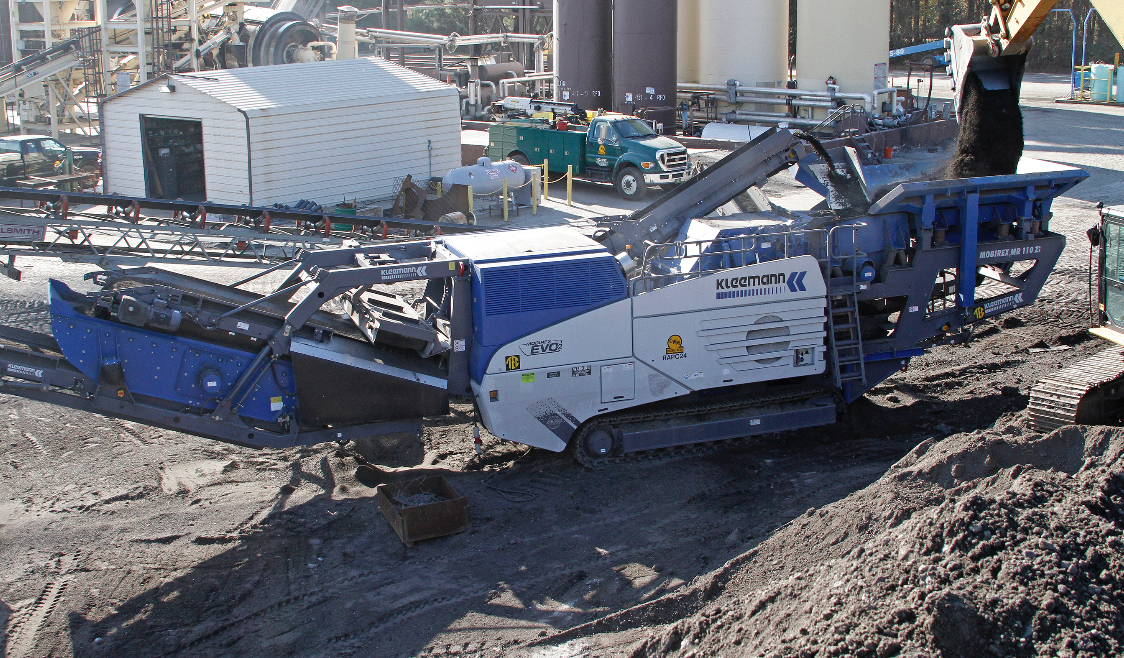
The two Mobirex impact crushers are moved around among 26 asphalt plants throughout the company. “The hopper wings fold hydraulically, there are no tools involved,” Greg Taylor said. “The only thing we really must do is take the side discharge belt from the prescreen off.”
“That half-inch prescreen saves wear and tear on the crusher,” Taylor said. “Material that’s already to-size will fall through the prescreen and is ejected out the small belt to the side. This is fed onto the main conveyor belt to be placed in the stockpile by a super-stacker conveyor.”
“The prescreen takes out all the fines ahead of the crusher, and cuts down on wear on your blow bars and wear plates,” Johnny Jones, crusher foreman, said. “If you screen all that stuff out, you won’t get the wear and tear you’d get if you sent it through the crusher. And sending the fines out on the main belt gives us one pile, rather than having to clean up two piles. The conveyor-mounted screen does a heckuva lot better job with the fines already out of the flow; the only thing going onto the screen deck is material which was crushed. It saves big time in fuel consumption, and on parts and wear plates.”
The fuel savings equates to about 8 gallons used per hour, according to Jones. Taylor attributes that to several factors: “It’s the prescreen, plus the diesel-electric drive in the crushers.”
In particular, Taylor likes the diesel-electric drive. “I prefer the electrics better than the hydraulics,” he said. “A hydraulic drive will go into bypass mode when they get too much of a load on them, stopping the crusher. The electrics won’t do that.”
“It combines gear reducers with electric drives, and that gives it more torque,” Jones said. “You can put bigger feed in there. I’ve worked with a lot of impact crushers, but all have been hydraulic drive, and basketball-size was about the largest you could do. But I can put 24-inch slabs in there, like we get when they break up driveways or parking lots with skid steer loaders. The Kleemann just chews them right up.”
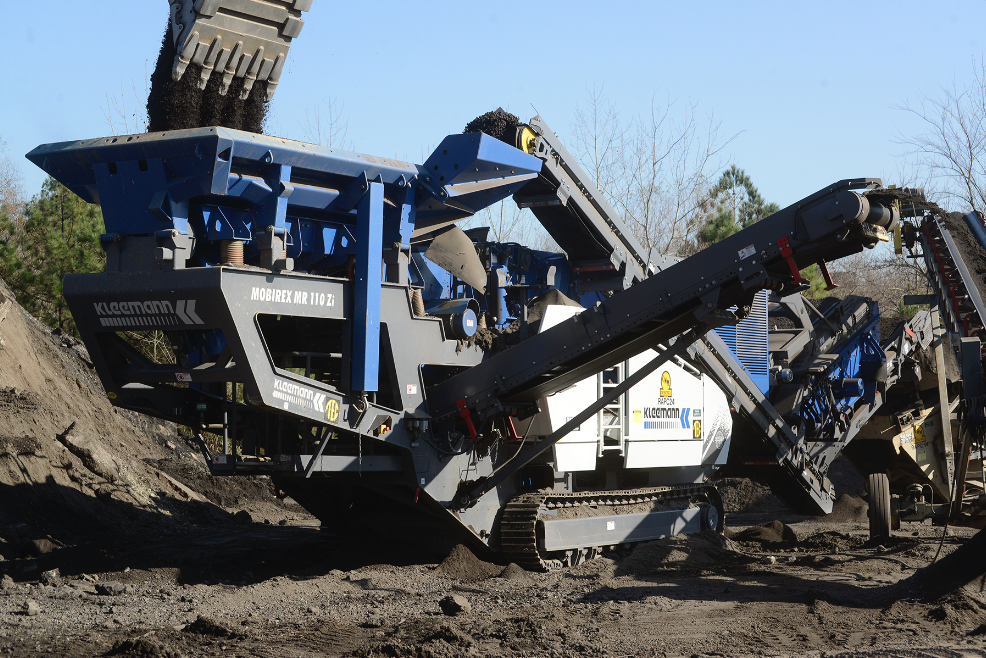
For C.W. Matthews, the Mobirex crusher is fed by an excavator rather than a front end loader. Fines off prescreen (center) bypass the crushing circuit and are conveyed to a super stacker where they rejoin half-inch minus material.
Adjust Settings, Service Intervals
Automatic zero-point adjustment has provided benefits for C.W. Matthews, Taylor said, making start-up quick and easy for the man starting the machine.
“The zero-point system saves a lot of time at start-up, but also throughout the day,” Jones said. “It eliminates putting plates in there to adjust the blow bars. Most of the time, I can wait two days before doing it, and I open it up and check the blow bars every third day.
“It’s very simple,” Jones added. “If I see I am getting too many returns to the crusher, I will go back and re-set it, adjust the toggle and come down a little bit more. Normally this would take 30 to 40 minutes, but we can do it in half the time.”
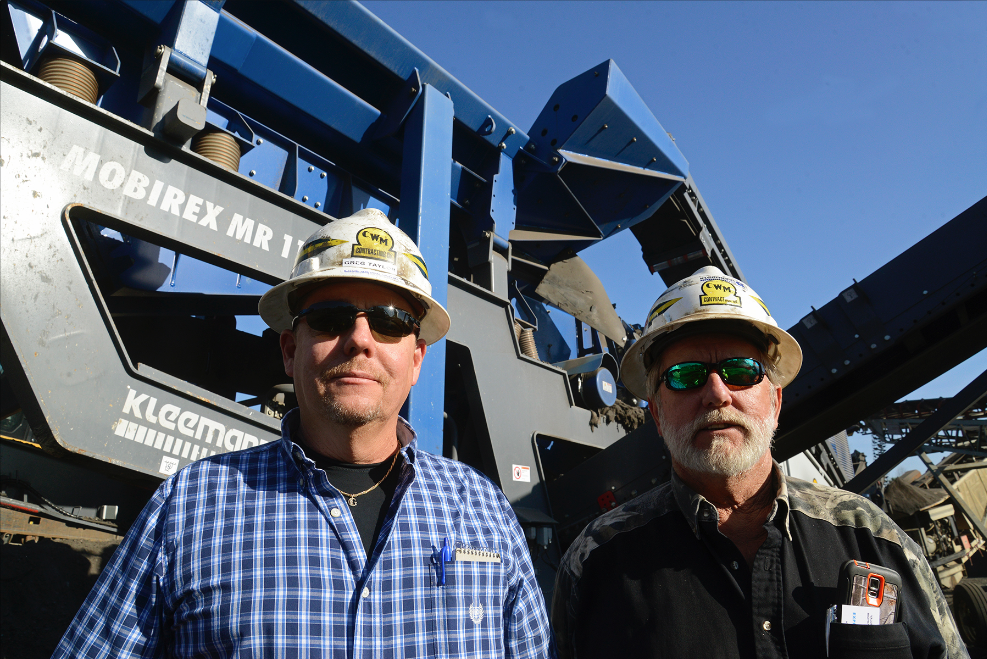
At the C.W. Matthews Forest Park, Georgia, plant are general superintendent Greg Taylor and crushing foreman Johnny Jones.
Also, a metal feeder beneath the blow bars receives crusher run and shifts it to the under-crusher conveyor. “That is lovely,” Jones said. “With other crushers, it drops straight on the belt. If you get a piece of metal it can cut right through the belt. This one just takes the beating and saves the conveyor.”
The equipment is serviced under contract by Tractor & Equipment Company at periodic intervals. “That’s good to keep us going,” Jones said. “We’re now putting out 270, 280 tons per hour of RAP.”
